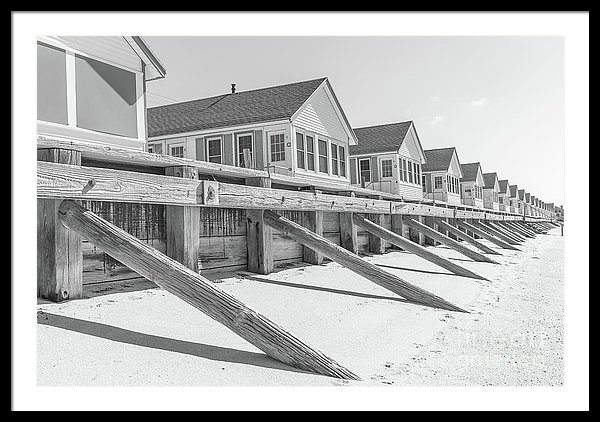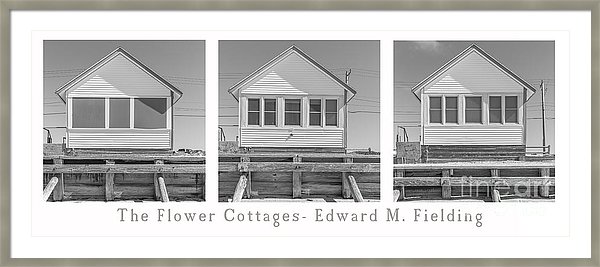When I was researching my latest photography project, The Flower Cottages of Cape Cod, I assumed when I arrived on site of the row of twenty-two iconic summer rental cottages, built in the 1930s, they would have their flower name plaques on them. But it was the off-season and the flower name plaques for each individual Days’ cottage was stored away for safe keeping until the start of the summer season.
I searched the web and found out a lot about the history of Days’ Cottages in North Truro, just outside of Provincetown and I found some of the names of the cottages from the real estate listings, as they recently went condo. But I could never find the complete list – so I turned to the the friendly folks on the Provincetown Photography Page Facebook group – and with the help of Google Earth we figured out the complete list of names for the “Flower Cottages”
1 – Daisy
2 – Phlox
3 – Poppy
4 – Aster
5 – Rose
6 – Lilac
7 – Tulip
8 – Peony
9 – Violet
10 – Crocus
11 – Dahlia
12 – Zinnia
13 – DOESN’T EXIST
14 – Cosmos
15 – Iris
16 – Salvia
17 – Petunia
18 – Begonia
19 – Larkspur
20 – Bluebell
21 – Marigold
22 – Primrose
The cute cottages and general store have been owned and managed by the Days family since they were built in 1931. Back then, “they went for $5 a night and $50 a week during the season, or $3 a night and $15 a week during the spring and fall.” By 1981, rentals were “$47 a night or $525 a week during the season, and $30 a night or $200 a week during spring and fall.” The 2014 rates began at $190 a night and $1300 a week during the high season, and as low as $110 a night or $750 per week during the shoulders.
Day’s Cottages or The Flower Cottages (because each cottage was named after a flower), began as one man’s dream in 1931. Built on a stretch of road along the beach at a time when very little existed in this area of Cape Cod and the idea of leisure travel for the average American working family was just starting to be a thing.
The Days family has rented out their row of 22 white cottages (plus one across the road that is a converted gas station of the same size) for almost 90 years.
All 22 beachfront cottages are 420 square feet, with two bedrooms, a small kitchen, and a living space with windows facing the water. The cottages are numbers 1 – 12 and 14 – 23 along the beach – no unlucky 13 among them.
Fine art photographer Edward M. Fielding has captured these cottage in the spirit of Bernd and Hilla Becher, the husband and wife team famous for documenting blast furnaces and other industrial sites with an unflinching, straight on documentary style. The nearly identical positioning of the camera creates the illusion of sameness at first glance but then as one looks closer they begin to see subtle differences between the structures. Just like each family’s summer vacation and memories are different in their own way even when staying in identical cottages.
In Flower Cottages series, the differences might be as subtle as a loose piece of siding, the addition of a picnic table, a backhoe in the background or perhaps drawn shades.
This series fits in with the themes expressed in the ground-breaking 1975 an exhibition called New Topographics – Man-Altered Landscapes which signaled a radical shift away from traditional depictions of landscape. Pictures of transcendent natural vistas gave way to unromanticized views of stark industrial landscapes, suburban sprawl, and everyday scenes not usually given a second glance. Photography allows one to freeze a moment of time and study it for all of the nuances normally overlooked.

